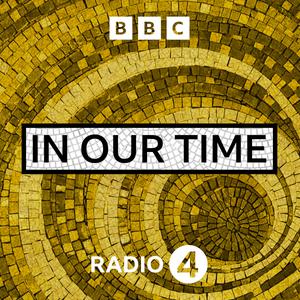
In Our Time
BBC Radio 4
Melvyn Bragg and guests discuss the ideas, people and events that have shaped our world.
- 50 minutes 20 secondsThe Kalevala
Melvyn Bragg and guests discuss the Finnish epic poem that first appeared in print in 1835 in what was then the Grand Duchy of Finland, part of the Russian Empire and until recently part of Sweden. The compiler of this epic was a doctor, Elias Lönnrot (1802-1884), who had travelled the land to hear traditional poems about mythical heroes being sung in Finnish, the language of the peasantry, and writing them down in his own order to create this landmark work. In creating The Kalevala, Lönnrot helped the Finns realise they were a distinct people apart from Sweden and Russia, who deserved their own nation state and who came to demand independence, which they won in 1917.
With
Riitta Valijärvi Associate Professor in Finnish and Minority Languages at University College London
Thomas Dubois The Halls-Bascom Professor of Scandinavian Folklore and Literature at the University of Wisconsin-Madison
And
Daniel Abondolo Formerly Reader in Hungarian at University College London
Producer: Simon Tillotson
Reading list:
Nigel Fabb, What is Poetry? Language and Memory in the Poems of the World (Cambridge University Press, 2015)
Frog, Satu Grünthal, Kati Kallio and Jarkko Niemi (eds), Versification: Metrics in Practice (Finnish Literature Society, 2021)
Riho Grünthal et al., ‘Drastic demographic events triggered the Uralic spread’ (Diachronica, Volume 39, Issue 4, Aug 2022)
Lauri Honko (ed.), The Kalevala and the World's Traditional Epics (Finnish Literature Society, 2002)
The Kalevala Heritage: Archive Recordings of Ancient Finnish Songs. Online Catalogue no. ODE8492.
Mauri Kunnas, The Canine Kalevala (Otava Publishing, 1992)
Kuusi, Matti, et al. (eds.), Finnish Folk Poetry: Epic (Finnish Literature Society, 1977)
Elias Lönnrot (trans. John Martin Crawford), Kalevala: The Epic Poem of Finland (first published 1887; CreateSpace Independent Publishing Platform, 2017)
Elias Lönnrot (trans. W. F. Kirby), Kalevala: The Land of the Heroes (first published by J.M. Dent & Sons, 1907, 2 vols.; Continuum International Publishing Group Ltd, 2000)
Elias Lönnrot (trans. Francis Peabody Magoun Jr.), The Kalevala, or Poems of the Kaleva District (Harvard University Press, 1963)
Elias Lönnrot (trans. Eino Friberg), The Kalevala: Epic of the Finnish People (Otava Publishing, 1988)
Elias Lönnrot (trans. Keith Bosley), The Kalevala: An Epic Poem after Oral Tradition (Oxford University Press, 1989)
Kirsti Mäkinen, Pirkko-Liisa Surojegin, Kaarina Brooks, An Illustrated Kalevala: Myths and Legends from Finland (Floris Books, 2020)
Sami Makkonen, Kalevala: The Graphic Novel (Ablaze, 2024)
Juha Y. Pentikäinen (trans. Ritva Poom), Kalevala Mythology, (Indiana University Press, 1999)
Tina K. Ramnarine, Ilmatar’s Inspirations: Nationalism, Globalization and the Changing Soundscapes of Finnish Folk Music (University of Chicago Press, 2003) Jonathan Roper (ed.), Alliteration in Culture (Palgrave Macmillan, 2011), especially chapter 12 ‘Alliteration in (Balto-) Finnic Languages’ by Frog and Eila Stepanova
Karl Spracklen, Metal Music and the Re-imagining of Masculinity, Place, Race and Nation (Emerald Publishing, 2020), especially the chapter ‘Finnish Folk Metal: Raising Drinking Horns in Mainstream Metal’
Leea Virtanen and Thomas A. DuBois, Finnish Folklore: Studia Fennica Folkloristica 9 (Finnish Literature Society, 2000)
25 April 2024, 9:15 am - 50 minutes 14 secondsJulian the Apostate
Melvyn Bragg and guests discuss the last pagan ruler of the Roman Empire. Fifty years after Constantine the Great converted to Christianity and introduced a policy of tolerating the faith across the empire, Julian (c.331 - 363 AD) aimed to promote paganism instead, branding Constantine the worst of all his predecessors. Julian was a philosopher-emperor in the mould of Marcus Aurelius and was noted in his lifetime for his letters and his satires, and it was his surprising success as a general in his youth in Gaul that had propelled him to power barely twenty years after a rival had slaughtered his family. Julian's pagan mission and his life were brought to a sudden end while on campaign against the Sasanian Empire in the east, but he left so much written evidence of his ideas that he remains one of the most intriguing of all the Roman emperors and a hero to the humanists of the Enlightenment.
With
James Corke-Webster Reader in Classics, History and Liberal Arts at King’s College, London
Lea Niccolai Assistant Professor in Classics at the University of Cambridge and Fellow and Director of Studies in Classics, Trinity College
And
Shaun Tougher Professor of Late Roman and Byzantine History at Cardiff University
Producer: Simon Tillotson
Reading list:
Polymnia Athanassiadi, Julian: An Intellectual Biography (first published 1981; Routledge, 2014)
Nicholas Baker-Brian and Shaun Tougher (eds.), Emperor and Author: The Writings of Julian the Apostate (Classical Press of Wales, 2012)
Nicholas Baker-Brian and Shaun Tougher (eds.), The Sons of Constantine, AD 337-361: In the Shadows of Constantine and Julian, (Palgrave Macmillan, 2020)
G.W. Bowersock, Julian the Apostate (first published 1978; Harvard University Press, 1997)
Susanna Elm, Sons of Hellenism, Fathers of the Church: Emperor Julian, Gregory of Nazianzus, and the Vision of Rome (University of California Press, 2012)
Ari Finkelstein, The Specter of the Jews: Emperor Julian and the Rhetoric of Ethnicity in Syrian Antioch (University of California Press, 2018)
David Neal Greenwood, Julian and Christianity: Revisiting the Constantinian Revolution (Cornell University Press, 2021)
Lea Niccolai, Christianity, Philosophy, and Roman Power: Constantine, Julian, and the Bishops on Exegesis and Empire (Cambridge University Press, 2023)
Stefan Rebenich and Hans-Ulrich Wiemer (eds), A Companion to Julian the Apostate (Brill, 2020)
Rowland Smith, Julian’s Gods: Religion and Philosophy in the Thought and Action of Julian the Apostate (Routledge, 1995)
H.C. Teitler, The Last Pagan Emperor: Julian the Apostate and the War against Christianity (Oxford University Press, 2017)
Shaun Tougher, Julian the Apostate (Edinburgh University Press, 2007)
W. C. Wright, The Works of Emperor Julian of Rome (Loeb, 1913-23)
18 April 2024, 9:15 am - 52 minutes 12 secondsThe Waltz
Melvyn Bragg and guests discuss the dance which, from when it reached Britain in the early nineteenth century, revolutionised the relationship between music, literature and people here for the next hundred years. While it may seem formal now, it was the informality and daring that drove its popularity, with couples holding each other as they spun round a room to new lighter music popularised by Johann Strauss, father and son, such as The Blue Danube. Soon the Waltz expanded the creative world in poetry, ballet, novellas and music, from the Ballets Russes of Diaghilev to Moon River and Are You Lonesome Tonight.
With
Susan Jones Emeritus Professor of English Literature at the University of Oxford
Derek B. Scott Professor Emeritus of Music at the University of Leeds
And
Theresa Buckland Emeritus Professor of Dance History and Ethnography at the University of Roehampton
Producer: Simon Tillotson
Reading list:
Egil Bakka, Theresa Jill Buckland, Helena Saarikoski, and Anne von Bibra Wharton (eds.), Waltzing Through Europe: Attitudes towards Couple Dances in the Long Nineteenth Century, (Open Book Publishers, 2020)
Theresa Jill Buckland, ‘How the Waltz was Won: Transmutations and the Acquisition of Style in Early English Modern Ballroom Dancing. Part One: Waltzing Under Attack’ (Dance Research, 36/1, 2018); ‘Part Two: The Waltz Regained’ (Dance Research, 36/2, 2018)
Theresa Jill Buckland, Society Dancing: Fashionable Bodies in England, 1870-1920 (Palgrave Macmillan, 2011)
Erica Buurman, The Viennese Ballroom in the Age of Beethoven (Cambridge University Press, 2022)
Paul Cooper, ‘The Waltz in England, c. 1790-1820’ (Paper presented at Early Dance Circle conference, 2018)
Sherril Dodds and Susan Cook (eds.), Bodies of Sound: Studies Across Popular Dance and Music (Ashgate, 2013), especially ‘Dancing Out of Time: The Forgotten Boston of Edwardian England’ by Theresa Jill Buckland
Zelda Fitzgerald, Save Me the Waltz (first published 1932; Vintage Classics, 2001)
Hilary French, Ballroom: A People's History of Dancing (Reaktion Books, 2022)
Susan Jones, Literature, Modernism, and Dance (Oxford University Press, 2013)
Mark Knowles, The Wicked Waltz and Other Scandalous Dances: Outrage at Couple Dancing in the 19th and Early 20th Centuries (McFarland, 2009)
Rosamond Lehmann, Invitation to the Waltz (first published 1932; Virago, 2006)
Eric McKee, Decorum of the Minuet, Delirium of the Waltz: A Study of Dance-Music Relations in 3/4 Time (Indiana University Press, 2012)
Eduard Reeser, The History of the Walz (Continental Book Co., 1949)
Stanley Sadie (ed.), The New Grove Dictionary of Music and Musicians, Vol. 27 (Macmillan, 2nd ed., 2000), especially ‘Waltz’ by Andrew Lamb
Derek B. Scott, Sounds of the Metropolis: The 19th-Century Popular Music Revolution in London, New York, Paris and Vienna (Oxford University Press, 2008), especially the chapter ‘A Revolution on the Dance Floor, a Revolution in Musical Style: The Viennese Waltz’
Joseph Wechsberg, The Waltz Emperors: The Life and Times and Music of the Strauss Family (Putnam, 1973)
Cheryl A. Wilson, Literature and Dance in Nineteenth-century Britain (Cambridge University Press, 2009)
Virginia Woolf, The Voyage Out (first published 1915; William Collins, 2013)
Virginia Woolf, The Years (first published 1937; Vintage Classics, 2016)
David Wyn Jones, The Strauss Dynasty and Habsburg Vienna (Cambridge University Press, 2023)
Sevin H. Yaraman, Revolving Embrace: The Waltz as Sex, Steps, and Sound (Pendragon Press, 2002)
Rishona Zimring, Social Dance and the Modernist Imagination in Interwar Britain (Ashgate Press, 2013)
11 April 2024, 9:15 am - 57 minutes 32 secondsThe Mokrani Revolt
Melvyn Bragg and guests discuss the revolt that broke out in 1871 in Algeria against French rule, spreading over hundreds of miles and countless towns and villages before being brutally suppressed. It began with the powerful Cheikh Mokrani and his family and was taken up by hundreds of thousands, becoming the last major revolt there before Algeria’s war of independence in 1954. In the wake of its swift suppression though came further waves of French migrants to settle on newly confiscated lands, themselves displaced by French defeat in Europe and the loss of Alsace-Lorraine, and their arrival only increased tensions. The Mokrani Revolt came to be seen as a watershed between earlier Ottoman rule and full national identity, an inspiration to nationalists in the 1950s.
With
Natalya Benkhaled-Vince Associate Professor of the History of Modern France and the Francophone World, Fellow of University College, University of Oxford
Hannah-Louise Clark Senior Lecturer in Global Economic and Social History at the University of Glasgow
And
Jim House Senior Lecturer in French and Francophone History at the University of Leeds
Producer: Simon Tillotson
Reading list:
Mahfoud Bennoune, The Making of Contemporary Algeria: 1830-1987 (Cambridge University Press, 1988)
Julia Clancy-Smith, Rebel and Saint: Muslim Notables, Populist Protest, Colonial Encounters, Algeria and Tunisia 1800–1904 (University of California Press, 1994)
Hannah-Louise Clark, ‘The Islamic Origins of the French Colonial Welfare State: Hospital Finance in Algeria’ (European Review of History, vol. 28, nos 5-6, 2021)
Hannah-Louise Clark, ‘Of jinn theories and germ theories: translating microbes, bacteriological medicine, and Islamic law in Algeria’ (Osiris, vol. 36, 2021)
Brock Cutler, Ecologies of Imperialism in Algeria (University of Nebraska Press, 2023)
Didier Guignard, 1871: L’Algérie sous Séquestre (CNRS Éditions, 2023)
Idir Hachi, ‘Histoire social de l’insurrection de 1871 et du procès de ses chefs (PhD diss., University of Aix-Marseille, 2017)
Abdelhak Lahlou, Idir Hachi, Isabelle Guillaume, Amélie Gregório and Peter Dunwoodie, ‘L'insurrection kabyle de 1871’ (Etudes françaises volume 57, no 1, 2021)
James McDougall, A History of Algeria (Cambridge University Press (2017)
John Ruedy, Modern Algeria: The Origins and Development of a Nation (Indiana University Press, 2005, 2nd edition)
Jennifer E Sessions, By Sword and Plow: France and the Conquest of Algeria (Cornell University Press, 2011)
Samia Touati, ‘Lalla Fatma N’Soumer, 1830–1863: Spirituality, Resistance and Womanly Leadership in Colonial Algeria (Societies vol. 8, no. 4, 2018)
Natalya Vince, Our Fighting Sisters: Nation, Memory and Gender in Algeria, 1954-2012 (Manchester University Press, 2015)
4 April 2024, 9:15 am - 58 minutes 2 secondsHeisenberg's Uncertainty Principle
Melvyn Bragg and guests discuss the German physicist who, at the age of 23 and while still a student, effectively created quantum mechanics for which he later won the Nobel Prize. Werner Heisenberg made this breakthrough in a paper in 1925 when, rather than starting with an idea of where atomic particles were at any one time, he worked backwards from what he observed of atoms and their particles and the light they emitted, doing away with the idea of their continuous orbit of the nucleus and replacing this with equations. This was momentous and from this flowed what’s known as his Uncertainty Principle, the idea that, for example, you can accurately measure the position of an atomic particle or its momentum, but not both.
With
Fay Dowker Professor of Theoretical Physics at Imperial College London
Harry Cliff Research Fellow in Particle Physics at the University of Cambridge
And
Frank Close Professor Emeritus of Theoretical Physics and Fellow Emeritus at Exeter College at the University of Oxford
Producer: Simon Tillotson
Reading list:
Philip Ball, Beyond Weird: Why Everything You Thought You Knew about Quantum Physics Is Different (Vintage, 2018)
John Bell, ‘Against 'measurement'’ (Physics World, Vol 3, No 8, 1990)
Mara Beller, Quantum Dialogue: The Making of a Revolution (University of Chicago Press, 2001)
David C. Cassidy, Beyond Uncertainty: Heisenberg, Quantum Physics, And The Bomb (Bellevue Literary Press, 2010)
Werner Heisenberg, Physics and Philosophy (first published 1958; Penguin Classics, 2000)
Carlo Rovelli, Helgoland: The Strange and Beautiful Story of Quantum Physics (Penguin, 2022)
28 March 2024, 10:15 am - 46 minutes 32 secondsThe Sack of Rome 1527
Melvyn Bragg and guests discuss the infamous assault of an army of the Holy Roman Emperor on the city of Rome in 1527. The troops soon broke through the walls of this holy city and, with their leader shot dead early on, they brought death and destruction to the city on an epic scale. Later writers compared it to the fall of Carthage or Jerusalem and soon the mass murder, torture, rape and looting were followed by disease which was worsened by starvation and opened graves. It has been called the end of the High Renaissance, a conflict between north and south, between Lutherans and Catholics, and a fulfilment of prophecy of divine vengeance and, perhaps more persuasively, a consequence of military leaders not feeding or paying their soldiers other than by looting.
With
Stephen Bowd Professor of Early Modern History at the University of Edinburgh
Jessica Goethals Associate Professor of Italian at the University of Alabama
And
Catherine Fletcher Professor of History at Manchester Metropolitan University
Producer: Simon Tillotson
Reading list:
Stephen Bowd, Renaissance Mass Murder: Civilians and Soldiers during the Italian Wars (Oxford University Press, 2018)
Benvenuto Cellini, Autobiography (Penguin Classics, 1999)
Benvenuto Cellini (trans. Julia Conaway Bondanella and Peter Bondanella), My Life (Oxford University Press, 2009)
André Chastel (trans. Beth Archer), The Sack of Rome 1527 (Princeton University Press, 1983
Catherine Fletcher, The Beauty and the Terror: An Alternative History of the Italian Renaissance (Bodley Head, 2020)
Kenneth Gouwens and Sheryl E. Reiss (eds), The Pontificate of Clement VII: History, Politics, Culture (Routledge, 2005)
Francesco Guicciardini (trans. Sidney Alexander), The History of Italy (first published 1561; Princeton University Press, 2020)
Luigi Guicciardini (trans. James H. McGregor), The Sack of Rome (first published 1537; Italica Press, 2008)
Judith Hook, The Sack of Rome (2nd edition, Palgrave Macmillan, 2004)
Geoffrey Parker, Emperor: A New Life of Charles V (Yale University Press, 2019)
21 March 2024, 10:15 am - 49 minutes 58 secondsAlice's Adventures in Wonderland
Melvyn Bragg and guests discuss Lewis Carroll's book which first appeared in print in 1865 with illustrations by John Tenniel. It has since become one of the best known works in English, captivating readers who follow young Alice as she chases a white rabbit, pink eyed, in a waistcoat with pocket watch, down a rabbit hole that becomes a well and into wonderland. There she meets the Cheshire Cat, the Hatter, the March Hare, the Mock Turtle and more, all the while growing smaller and larger, finally outgrowing everyone at the trial of Who Stole the Tarts from the Queen of Hearts and exclaiming 'Who cares for you? You’re nothing but a pack of cards!'
With
Franziska Kohlt Leverhulme Research Fellow in the History of Science at the University of Leeds and the Inaugural Carrollian Fellow of the University of Southern California
Kiera Vaclavik Professor of Children’s Literature and Childhood Culture at Queen Mary, University of London
And
Robert Douglas-Fairhurst Professor of English Literature at Magdalen College, University of Oxford
Producer: Simon Tillotson
Reading list:
Kate Bailey and Simon Sladen (eds), Alice: Curiouser and Curiouser (V&A Publishing, 2021)
Gillian Beer, Alice in Space: The Sideways Victorian World of Lewis Carroll (University of Chicago Press, 2016)
Will Brooker, Alice's Adventures: Lewis Carroll and Alice in Popular Culture (Continuum, 2004)
Humphrey Carpenter, Secret Gardens: A Study of the Golden Age of Children’s Literature (first published 1985; Faber and Faber, 2009)
Lewis Carroll (introduced by Martin Gardner), The Annotated Alice: The Definitive Edition, (W. W. Norton & Company, 2000)
Gavin Delahunty and Christoph Benjamin Schulz (eds), Alice in Wonderland Through the Visual Arts (Tate Publishing, 2011)
Robert Douglas-Fairhurst, The Story of Alice: Lewis Carroll and the Secret History of Wonderland (Harvill Secker, 2015)
Colleen Hill, Fairy Tale Fashion (Yale University Press, 2016)
Franziska Kohlt, Alice through the Wonderglass: The Surprising Histories of a Children's Classic (Reaktion, forthcoming 2025) Franziska Kohlt and Justine Houyaux (eds.), Alice: Through the Looking-Glass: A Companion (Peter Lang, forthcoming 2024)
Charlie Lovett, Lewis Carroll: Formed by Faith (University of Virginia Press, 2022)
Elizabeth Sewell, The Field of Nonsense (first published 1952; Dalkey Archive Press, 2016)
Kiera Vaclavik, 'Listening to the Alice books' (Journal of Victorian Culture, Volume 26, Issue 1, January 2021)
Diane Waggoner, Lewis Carroll's Photography and Modern Childhood (Princeton University Press 2020)
Edward Wakeling, The Man and his Circle (IB Tauris, 2014)
Edward Wakeling, The Photographs of Lewis Carroll: A Catalogue Raisonné (University of Texas Press, 2015)
14 March 2024, 10:15 am - 50 minutes 13 secondsHormones
Melvyn Bragg and guests discuss some of the chemical signals coursing through our bodies throughout our lives, produced in separate areas and spreading via the bloodstream. We call these 'hormones' and we produce more than 80 of them of which the best known are arguably oestrogen, testosterone, adrenalin, insulin and cortisol. On the whole hormones operate without us being immediately conscious of them as their goal is homeostasis, maintaining the levels of everything in the body as required without us having to think about them first. Their actions are vital for our health and wellbeing and influence many different aspects of the way our bodies work.
With
Sadaf Farooqi Professor of Metabolism and Medicine at the University of Cambridge
Rebecca Reynolds Professor of Metabolic Medicine at the University of Edinburgh
And
Andrew Bicknell Associate Professor in the School of Biological Sciences at the University of Reading
Produced by Victoria Brignell
Reading list:
Rachel Carson, Silent Spring (first published 1962; Penguin Classics, 2000)
Stephen Nussey and Saffron Whitehead, Endocrinology: An Integrated Approach (BIOS Scientific Publishers; 2001)
Aylinr Y. Yilmaz, Comprehensive Introduction to Endocrinology for Novices (Independently published, 2023)
7 March 2024, 10:15 am - 49 minutes 1 secondThe Hanseatic League
Melvyn Bragg and guests discuss the Hanseatic League or Hansa which dominated North European trade in the medieval period. With a trading network that stretched from Iceland to Novgorod via London and Bruges, these German-speaking Hansa merchants benefitted from tax exemptions and monopolies. Over time, the Hansa became immensely influential as rulers felt the need to treat it well. Kings and princes sometimes relied on loans from the Hansa to finance their wars and an embargo by the Hansa could lead to famine. Eventually, though, the Hansa went into decline with the rise in the nation state’s power, greater competition from other merchants and the development of trade across the Atlantic.
With
Justyna Wubs-Mrozewicz Associate Professor of Medieval History at the University of Amsterdam
Georg Christ Senior Lecturer in Medieval and Early Modern History at the University of Manchester
And
Sheilagh Ogilvie Chichele Professor of Economic History at All Souls College, University of Oxford
Producer: Victoria Brignell
Reading list:
James S. Amelang and Siegfried Beer, Public Power in Europe: Studies in Historical Transformations (Plus-Pisa University Press, 2006), especially `Trade and Politics in the Medieval Baltic: English Merchants and England’s Relations to the Hanseatic League 1370–1437`
Nicholas R. Amor, Late Medieval Ipswich: Trade and Industry (Boydell & Brewer, 2011)
B. Ayers, The German Ocean: Medieval Europe around the North Sea (Equinox, 2016)
H. Brand and P. Brood, The German Hanse in Past & Present Europe: A medieval league as a model for modern interregional cooperation? (Castel International Publishers, 2007)
Wendy R. Childs, The Trade and Shipping of Hull, 1300-1500 (East Yorkshire Local History Society, 1990)
Alexander Cowan, Hanseatic League: Oxford Bibliographies (Oxford University Press, 2010)
Philippe Dollinger, The German Hansa (Macmillan, 1970)
John D. Fudge, Cargoes, Embargoes and Emissaries: The Commercial and Political Interaction of England and the German Hanse, 1450-1510 (University of Toronto Press, 1995)
Donald J. Harreld, A Companion to the Hanseatic League (Brill, 2015)
T.H. Lloyd, England and the German Hanse, 1157 – 1611: A Study of their Trade and Commercial Diplomacy (first published 1991; Cambridge University Press, 2002)
Giampiero Nigro (ed.), Maritime networks as a factor in European integration (Fondazione Istituto Internazionale Di Storia Economica “F. Datini” Prato, University of Firenze, 2019), especially ‘Maritime Networks and Premodern Conflict Management on Multiple Levels. The Example of Danzig and the Giese Family’ by Justyna Wubs-Mrozewicz
Sheilagh Ogilvie, Institutions and European Trade: Merchant Guilds, 1000-1800 (Cambridge University Press, 2011)
Paul Richards (ed.), Six Essays in Hanseatic History (Poppyland Publishing, 2017)
Paul Richards, King’s Lynn and The German Hanse 1250-1550: A Study in Anglo-German Medieval Trade and Politics (Poppyland Publishing, 2022)
Stephen H. Rigby, The Overseas Trade of Boston, 1279-1548 (Böhlau Verlag, 2023)
Justyna Wubs-Mrozewicz and Stuart Jenks (eds.), The Hanse in Medieval & Early Modern Europe (Brill, 2012) Justyna Wubs-Mrozewicz, ‘The late medieval and early modern Hanse as an institution of conflict management’ (Continuity and Change 32/1, Cambridge University Press, 2017)
29 February 2024, 10:15 am - 53 minutes 59 secondsPanpsychism
Melvyn Bragg and guests discuss the idea that some kind of consciousness is present not just in our human brains but throughout the universe, right down to cells or even electrons. This is panpsychism and its proponents argue it offers a compelling alternative to those who say we are nothing but matter, like machines, and to those who say we are both matter and something else we might call soul. It is a third way. Critics argue panpsychism is implausible, an example of how not to approach this problem, yet interest has been growing widely in recent decades partly for the idea itself and partly in the broader context of understanding how consciousness arises.
With
Tim Crane Professor of Philosophy and Pro-Rector at the Central European University Director of Research, FWF Cluster of Excellence, Knowledge in Crisis
Joanna Leidenhag, Associate Professor in Theology and Philosophy at the University of Leeds
And
Philip Goff Professor of Philosophy at Durham University
Producer: Simon Tillotson
Reading list:
Anthony Freeman (ed.), Consciousness and Its Place in Nature: Does Physicalism Entail Panpsychism? (Imprint Academic, 2006), especially 'Realistic Monism' by Galen Strawson
Philip Goff, Galileo's Error: Foundations for A New Science of Consciousness (Pantheon, 2019)
Philip Goff, Why? The Purpose of the Universe (Oxford University Press, 2023)
David Ray Griffin, Unsnarling the World-Knot: Consciousness, Freedom and the Mind-Body Problem (Wipf & Stock, 2008)
Joanna Leidenhag, Minding Creation: Theological Panpsychism and the Doctrine of Creation (Bloomsbury, 2021)
Joanna Leidenhag, ‘Panpsychism and God’ (Philosophy Compass Vol 17, Is 12, e12889)
Hedda Hassel Mørch, Non-physicalist Theories of Consciousness (Cambridge University Press, 2024)
Thomas Nagel, Mortal Questions (Cambridge University Press, 2012), especially the chapter 'Panpsychism'
David Skrbina, Panpsychism in the West (MIT Press, 2007) James van Cleve, 'Mind-Dust or Magic? Panpsychism versus Emergence' (Philosophical Perspectives Vol. 4, Action Theory and Philosophy of Mind, Ridgeview Publishing Company, 1990)
22 February 2024, 10:15 am - 49 minutes 50 secondsNefertiti
Melvyn Bragg and guests discuss the woman who inspired one of the best known artefacts from ancient Egypt. The Bust of Nefertiti is multicoloured and symmetrical, about 49cm/18" high and, despite the missing left eye, still holds the gaze of onlookers below its tall, blue, flat topped headdress. Its discovery in 1912 in Amarna was kept quiet at first but its display in Berlin in the 1920s caused a sensation, with replicas sent out across the world. Ever since, as with Tutankhamun perhaps, the concrete facts about Nefertiti herself have barely kept up with the theories, the legends and the speculation, reinvigorated with each new discovery.
With
Aidan Dodson Honorary Professor of Egyptology at the University of Bristol
Joyce Tyldesley Professor of Egyptology at the University of Manchester
And
Kate Spence Senior Lecturer in Egyptian Archaeology at the University of Cambridge and Fellow of Emmanuel College
Producer: Simon Tillotson
Reading list:
Dorothea Arnold (ed.), The Royal Women of Amarna: Images of Beauty from Ancient Egypt (The Metropolitan Museum of Art, 1996) Norman de Garis Davies, The Rock Tombs of el-Amarna (6 vols. Egypt Exploration Society, 1903-1908) Aidan Dodson, Amarna Sunset: Nefertiti, Tutankhamun, Ay, Horemheb and the Egyptian Counter-reformation. (American University in Cairo Press, 2009 Aidan Dodson, Nefertiti, Queen and Pharaoh of Egypt: her life and afterlife (American University in Cairo Press, 2020)
Aidan Dodson, Tutankhamun: King of Egypt: his life and afterlife (American University in Cairo Press, 2022)
Barry Kemp, The City of Akhenaten and Nefertiti: Amarna and Its People (Thames and Hudson, 2012)
Dominic Montserrat, Akhenaten: History, Fantasy and Ancient Egypt (Routledge, 2002)
Friederike Seyfried (ed.), In the Light of Amarna: 100 Years of the Nefertiti Discovery (Ägyptisches Museum und Papyrussamlung Staatlich Museen zu Berlin/ Michael Imhof Verlag, 2013)
Joyce Tyldesley, Tutankhamun: Pharaoh, Icon, Enigma (Headline, 2022)
Joyce Tyldesley, Nefertiti’s Face: The Creation of an Icon (Profile Books, 2018)
Joyce Tyldesley, Nefertiti: Egypt’s Sun Queen (Viking, 1998)
15 February 2024, 10:15 am - More Episodes? Get the App
Your feedback is valuable to us. Should you encounter any bugs, glitches, lack of functionality or other problems, please email us on [email protected] or join Moon.FM Telegram Group where you can talk directly to the dev team who are happy to answer any queries.
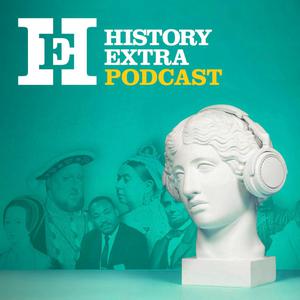 History Extra podcast
History Extra podcast
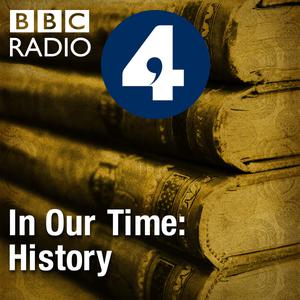 In Our Time: History
In Our Time: History
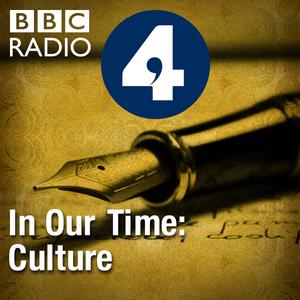 In Our Time: Culture
In Our Time: Culture
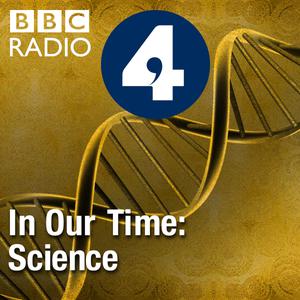 In Our Time: Science
In Our Time: Science
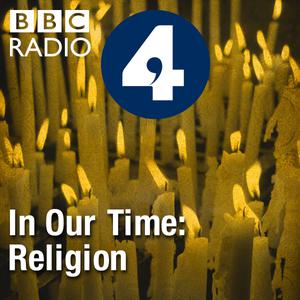 In Our Time: Religion
In Our Time: Religion
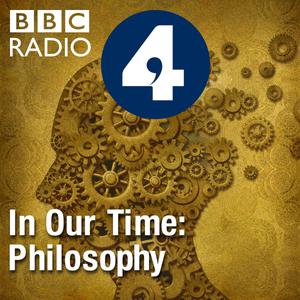 In Our Time: Philosophy
In Our Time: Philosophy